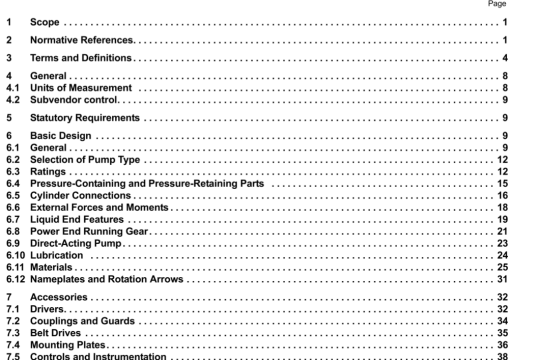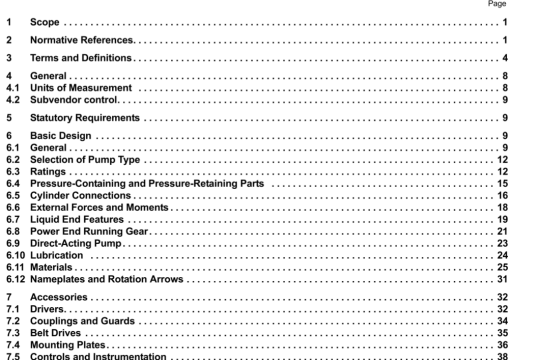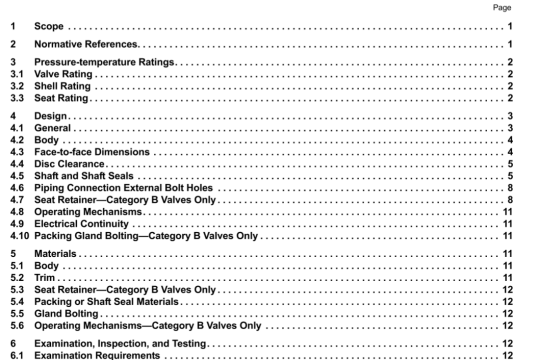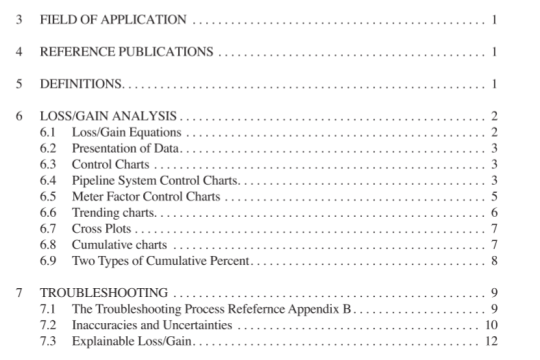API RP 53:1997(2004) pdf download
API RP 53:1997(2004) pdf download.Recommended Practices for Blowout Prevention Equipment Systems for Drilling Wells.
7.6.2 Drilling spools for BOP stacks should meet the following minimum specifications:
a. 3K and 5K arrangements should havc two sidc outlets no smaller than a 2-inch (5.08 cm) nominal diameter and bc flanged, studded, or hubbed. 10K. 15K, and 20K arrangements should have two side outlets, one 3-inch (7.62 cm) and one 2-inch (5.08 cm) nominal diameter as a minimum, and be flanged. studded, or hubbed.
bL Havc a vcrucal bore diameter the same internal diameter as the mating BOPs and at least equal to the maximum bore of the uppermost casing/tubing head.
c. Have a rated working pressure equal to the rated working pressure of the installed ram BOR
8 Choke Manifolds and Choke Lines— Surface BOP Installations
8.1 GENERAL
The choke m.inifold consists of high pressure pipe. httings. flanges, valves, and manual and/or hydraulic operated adjustable chokes. This manifold may bleed off weilbore pressure at a controlled rate or may stop fluid flow from the weilbore completely, as required.
8.2 INSTALLATION GUIDELINES—CHOKE MANIFOLD
Recommended practices for installation of choke mani— folds for surface installations include:
a. Manifold equipment subject to well and/or pump pressure (nognally upstream of and including the chokes) should have a working pressure equal to or greater than the rated working pressure of the rain BOPs in use. This equipment should be tested when installed in accordance with provisions or Section 17.
6. For working pressures of 3,000 psi (20.7 MPa) and above. flanged. welded, clamped, or other end connections that are in accordance with API Specification 6A. should be employed on components subjected to well pressure.
c. The choke manifold should be placed in a readily accessibk location, preferably outside the rig substructure.
d. Although not shown in the example equipment illustrations, buffer tanks are sometimes installed downstream of the choke assemblies for the purpose of manifoldmg the bleed lines togcthcr. V1en buffer tanks are employed, provision should bc made to isolate a failure or malfunction.
e. All choke manifold valves should be full boie. Two valves are recommended between the BOP stack and the choke manifold for installations with rated working pressures of 5.000 psi (34.5 MPa) and above. One of these two valves should be remotely controlled. Dwing operations. all valves should be fully opened or fully closed.
f. A minimum of one remotely operated choke should be installed on 10,000 psi (69.0 MPa), 15.000 psi (1035 MPa), and 20.000 psi (138.0 MPa) rnted working pressure mamfolds.
g. Choke manifold configurations should ailow for re-routing of flow (in the event of eroded, plugged. or malfunctioning parts) without interrupting flow control.
h. Consideration should be given to the low temperature properties of the materials used in installations to he exposed to unusually low temperatures and should be protected from freezing by heating, draining, filling with appropriate fluid, or other appropriate means.
i. Pressure gauges suitable for operating pressure and drilling fluid service should be installed so that drill pipe and annulus pressures may be accurately monitored and readily observed at the station where well control operanons are to be conducted.
. The choke control station, whether at the choke manifold or remote from the rig floor, should be as convenient as possible and should include all monitors necessary to furnish an overview of the well control situation. The ability to monitor and control from the same location such items as standpipe pressure. casing pressure, pump strokes, etc.. greatly increases well control efficiency.
k. Rig air systems should be checked to assure their adequacy to provide the necessary pressure and volume requirements for controls and chokes. The remotely operated choke should be equipped with an emergency backup system such as a manual pump or nitrogen for use in the event rig air becomes unavailable.
8.3 INSTALLATiON GUIDELINES—CHOKE LINES
8.3.1 The choke line and manifold provide a means of applying back pressure on the formation while circulating out a formation fluid influx from the wellbore following an influx or kick. Refer to API Specification 16C for equipment specific requirements for choke manifolds, flexible choke lines. and articulated line assemblies. The choke line (which connects the flOP stack to the choke manifold) and lines downstream of the choke should.




